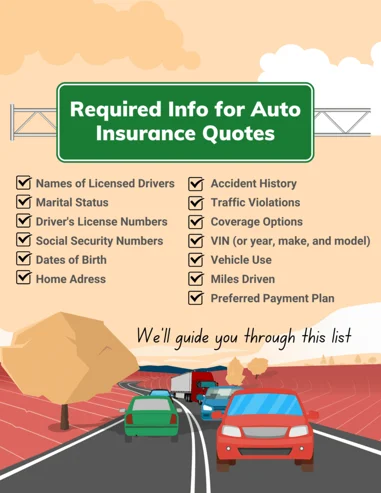Auto insurance is a critical financial safeguard for drivers, offering protection against unforeseen accidents, damage, and liabilities. However, finding the right policy begins with obtaining an auto insurance quote—a process that can feel overwhelming due to the variety of factors involved. This article provides an in-depth exploration of auto insurance quotes, including what they are, how to obtain them, factors affecting their cost, and tips for comparison.
What Is an Auto Insurance Quote?
An auto insurance quote is an estimate of the premium you will pay for a car insurance policy. It outlines the costs associated with various coverage options and deductibles, as well as any discounts for which you may qualify. Quotes are typically provided by insurance companies or brokers based on the information you supply about yourself, your vehicle, and your coverage needs.
Key Components of a Quote
- Coverage Types: Includes liability, collision, comprehensive, uninsured motorist coverage, and more.
- Limits: The maximum amount the insurer will pay for a covered incident.
- Deductibles: The amount you pay out-of-pocket before insurance kicks in.
- Discounts: Potential reductions in premium costs based on factors like safe driving or bundling policies.
It’s important to note that quotes are not binding; they serve as preliminary estimates and may change after the insurer completes its underwriting process.
Why Are Auto Insurance Quotes Important?
Obtaining multiple quotes is a crucial step in finding the best car insurance policy. Here’s why:
- Cost Comparison: Rates can vary significantly between insurers for similar coverage. For instance, some companies may charge $898 annually for minimum coverage while others might charge over $8,000.
- Tailored Coverage: Quotes allow you to evaluate different coverage options tailored to your specific needs.
- Discount Opportunities: Comparing quotes helps identify insurers offering discounts that suit your profile.
RELATED POST>>> Understanding Private Alternative Student Loans
RELATED POST>>> Top 5 Benefits of Having Auto Insurance
Information Needed for an Auto Insurance Quote
To receive an accurate quote, you’ll need to provide detailed information in three main categories:
1. Personal Information
- Name, address, and contact details.
- Driver’s license number and years of driving experience.
- Driving history (e.g., tickets or accidents).
2. Vehicle Details
- Year, make, and model of your car.
- Vehicle Identification Number (VIN).
- Annual mileage and usage (personal or business).
3. Coverage Preferences
- Desired types of coverage (e.g., collision or comprehensive).
- Deductible amounts.
- Optional add-ons like roadside assistance or rental car reimbursement.
Providing accurate information ensures that the quote reflects your actual premium as closely as possible.
Factors That Affect Auto Insurance Quotes
Several variables influence the cost of your car insurance quote:
1. Personal Factors
- Age and Gender: Younger drivers often face higher premiums due to perceived risk.
- Driving Record: A clean record results in lower rates; violations increase costs.
- Credit Score: Insurers may use credit-based scoring to assess risk.
2. Vehicle Characteristics
- Expensive or high-performance cars generally cost more to insure.
- Safety features like anti-theft devices can lower premiums.
3. Location
- Urban areas with higher traffic density often lead to higher rates compared to rural regions.
4. Coverage Choices
- Higher limits and lower deductibles increase premiums.
- Optional coverages like uninsured motorist protection add to costs.
By understanding these factors, you can make informed decisions about balancing cost with adequate protection.
TRENDING POST>>> Eligibility and Benefits of the Lockheed Martin Scholarship
How to Obtain Auto Insurance Quotes
There are several ways to request auto insurance quotes:
1. Online Tools
Many insurers offer online calculators where you can input your details and receive instant quotes. Comparison websites allow you to view estimates from multiple providers side by side.
2. Agents and Brokers
Insurance agents or brokers provide personalized assistance in finding policies that meet your needs.
3. Direct Contact
You can also contact insurers directly via phone or visit their offices for personalized quotes.
It’s recommended to obtain at least three quotes for comparison.
How to Compare Auto Insurance Quotes
When comparing quotes, it’s essential to look beyond price alone:
- Coverage Levels: Ensure all quotes include comparable coverage types and limits.
- Policy Features: Look for additional benefits such as accident forgiveness or deductible waivers.
- Policy Length: Some insurers offer six-month policies while others provide annual terms; shorter terms may result in more frequent rate adjustments.
- Discounts: Evaluate which insurer offers the most applicable discounts for your profile.
By carefully analyzing these aspects, you can identify the best value rather than simply choosing the lowest price.
Common Mistakes When Getting Auto Insurance Quotes
Avoid these pitfalls during the quoting process:
- Providing inaccurate information can lead to discrepancies between quoted and final premiums.
- Focusing solely on price without considering coverage quality.
- Failing to review exclusions or limitations in the policy.
Taking time to thoroughly review each quote ensures you make an informed decision
Tips for Lowering Your Auto Insurance Costs
Here are some strategies to reduce your premium:
- Bundle auto insurance with other policies like home insurance.
- Opt for higher deductibles if you’re comfortable with greater out-of-pocket expenses.
- Maintain a clean driving record and improve your credit score over time.
- Take advantage of discounts such as safe driver programs or multi-car policies
Conclusion
Auto insurance quotes are more than just numbers—they represent a crucial step in securing financial protection on the road. By understanding what goes into a quote, comparing options effectively, and avoiding common mistakes, you can find a policy that balances cost with comprehensive coverage.
Whether you’re a first-time buyer or looking to switch providers, investing time in obtaining and analyzing multiple quotes is key to making an informed decision that protects both your vehicle and your wallet.
What are the most common discounts offered in auto insurance quotes
Auto insurance companies offer a variety of discounts to help reduce premiums for policyholders. Here are some of the most common discounts available:
1. Safe Driver Discount
Drivers with clean records, meaning no accidents or traffic violations over a specified period, can often qualify for significant discounts. This reward for safe driving can range from 10% to 40%, depending on the insurer and the length of the accident-free period.
2. Multi-Policy Discount
Bundling multiple insurance policies, such as auto and home insurance, typically results in savings. This discount can often range from 5% to 25% and is a popular way for insurers to reward customer loyalty.
3. Multi-Car Discount
Insuring more than one vehicle with the same company usually qualifies for a multi-car discount, which can be as high as 25%. This discount encourages families or individuals with multiple vehicles to consolidate their insurance needs with one provider.
4. Low Mileage Discount
Drivers who log fewer miles annually—often under 10,000—may be eligible for a low mileage discount. Some insurers even offer pay-per-mile policies that charge based on actual mileage driven.
5. New Car Discount
Newer vehicles may qualify for discounts due to their advanced safety features and lower risk of mechanical failure. Discounts for new cars typically range from 10% to 15%.
6. Safety Features Discount
Vehicles equipped with safety features like airbags, anti-lock brakes, and anti-theft systems can earn discounts. The percentage varies by insurer but can be substantial, particularly for advanced safety technologies.
7. Student Discount
Young drivers who maintain good grades in school may qualify for student discounts, which can be as high as 25%. This discount rewards academic achievement and responsible behavior.
8. Payment Discounts
Paying your premium in full upfront or setting up automatic payments can lead to discounts ranging from 5% to 10%. Some insurers also offer savings for opting out of paper statements.
9. Loyalty Discount
Many insurers provide discounts for customers who maintain continuous coverage without lapses. This loyalty discount rewards long-term customers and varies by state and insurer.
10. Driver Education Discount
Teenagers and seniors who complete approved driver education courses may receive discounts on their premiums, recognizing their commitment to safe driving practices.
11. Affiliation Discounts
Members of certain organizations or professions (e.g., military personnel, teachers) may qualify for additional discounts based on their affiliations with specific groups or employers.
12. Claims-Free Cash Back
Some insurers offer cash back or premium reductions for policyholders who remain claims-free over a set period, encouraging responsible driving behavior.
By understanding these common discounts, drivers can better navigate their auto insurance options and potentially save significant amounts on their premiums. It’s advisable to inquire about all available discounts when obtaining quotes from different insurers, as eligibility and savings can vary widely.
FIND THE BEST AUTO INSURANCE COMPANY HERE>> BEST INSURANCE COMPANY IN CLOSE TO YOU







